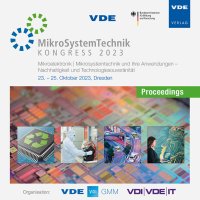Laser-Induced Structuring of Glass as a Promising Manufacturing Technology for Lab-on-Chip Devices: Opportunities and Challenges
Conference: MikroSystemTechnik Kongress 2023 - Kongress
10/23/2023 - 10/25/2023 at Dresden, Deutschland
Proceedings: MikroSystemTechnik Kongress 2023
Pages: 7Language: englishTyp: PDF
Authors:
Karl, Werner J.; Jagadesh, Nagashree B. (X-FAB MEMS Foundry Itzehoe GmbH, Itzehoe, Germany)
Knechtel, Roy (X-FAB MEMS Foundry GmbH, Erfurt, Germany & University of Applied Sciences Schmalkalden, Chair of the Carl-Zeiss-Foundation, Schmalkalden, Germany)
Abstract:
Glass is an important material in the life sciences. It is however difficult to structure. To realise deep features such as through-holes, used as fluid ports in microfluidic devices, typically methods such as powderblasting/abrasive jet machining, precision milling/drilling, or ultrasonic machining are used. These techniques produce debris and are therefore not cleanroom compatible. Recently, substantial advances in laser-based approaches to structure glass with high precision have been achieved and reported. There are now several companies offering these new capabilities as a commercial processing service, and first cleanroom-compatible laser tools allowing automated wafer-handling have become available. We believe that laser-based machining of glass wafers will become a key technology, enabling the manufacturing of advanced devices. Particularly laser-induced selective etching and glass cutting by laser-filamentation seem promising new process technologies for volume production. We have started assessing potential uses. Following a short introduction, we will discuss some of the benefits and challenges involved from an industrial and process integration perspective. Integration becomes an important aspect when going beyond plain glass micromachining. Many applications will require wafer-level bonding of a laser-structured glass wafer with a silicon wafer. The integration of metal layers presents another significant challenge.


